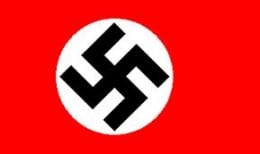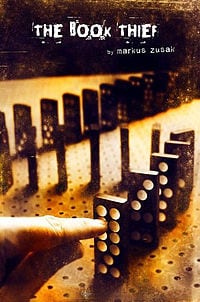 When I was a child, whenever I saw the word ‘Prologue’ in a book, I immediately skipped over it and headed straight to chapter one where I was more likely to be planted into the action and heart of the story. My opinion of prologues began to change after I read Carnegie Medal book winner, Tamar written by Mal Peet. The prologue in Tamar hooked me and carried me through four hundred and twenty four pages of fine print until I got the answer to the question that set up the hook. And it was this “ah-ha” moment that led me to dig more deeply into the function of prologues. My research on prologues also inspired my Vermont College of Fine Arts critical thesis entitled, “To Prologue or Not to Prologue” and showed me how to fix the opening of my debut novel, Lara’s Gift.
When I was a child, whenever I saw the word ‘Prologue’ in a book, I immediately skipped over it and headed straight to chapter one where I was more likely to be planted into the action and heart of the story. My opinion of prologues began to change after I read Carnegie Medal book winner, Tamar written by Mal Peet. The prologue in Tamar hooked me and carried me through four hundred and twenty four pages of fine print until I got the answer to the question that set up the hook. And it was this “ah-ha” moment that led me to dig more deeply into the function of prologues. My research on prologues also inspired my Vermont College of Fine Arts critical thesis entitled, “To Prologue or Not to Prologue” and showed me how to fix the opening of my debut novel, Lara’s Gift.
My all-time favorite prologue is the one that Markus Zusak wrote in The Book Thief. It ambitiously and successfully frames the book thief’s story and hints at each of the major plot points: the inciting incident, the climax, and the resolution.
 Markus Zusak uses a prologue to introduce us to his narrator: Death. The reason the prologue works so well in The Book Thief is because Death is such an unlikely narrator that we need time to get to know him, as well as his perspective and what that perspective adds to the protagonist’s struggle in the story.
Markus Zusak uses a prologue to introduce us to his narrator: Death. The reason the prologue works so well in The Book Thief is because Death is such an unlikely narrator that we need time to get to know him, as well as his perspective and what that perspective adds to the protagonist’s struggle in the story.
The prologue of The Book Thief is divided into 5 sections:
– The Title Page which gives us a bullet-point-outline of the prologue content;
– The “Death and Chocolate” chapter in which the Narrator introduces himself—the colors—and—the book thief;
– The “Beside The Railway Line” chapter in which Zusak hints at the inciting incident;
– “The Eclipse” chapter in which Death offers a possible resolution; and finally
– “The Flag” chapter in which Zusak shows us a glimpse of the climax.
It is in this last section that Death leaves us with … the colors … red, white, and black … and given what we know about the history of Germany, a subliminal notion of the Nazi Party Flag might linger in our mind as we read on.
Through the prologue, Zusak builds a frame that scales down a potentially big story by focusing our attention on: Death as the narrator; the changing colors of the sky and what that means to the story; as well as the book thief as a survivor.
 At some point in time, I will be standing over you, as genially as possible. Your soul will be in my arms. A color will be perched on my shoulder. I will carry you gently away . . . The question is, what color will everything be at that moment when I come for you? What will the sky be saying? . . . It’s the leftover humans. The survivors. They’re the ones I can’t stand to look at . . . I deliberately seek out the colors to keep my mind off them . . . this is the story of one of those perpetual survivors—an expert at being left behind . . . a girl . . . I saw the book thief three times. (4-5)
At some point in time, I will be standing over you, as genially as possible. Your soul will be in my arms. A color will be perched on my shoulder. I will carry you gently away . . . The question is, what color will everything be at that moment when I come for you? What will the sky be saying? . . . It’s the leftover humans. The survivors. They’re the ones I can’t stand to look at . . . I deliberately seek out the colors to keep my mind off them . . . this is the story of one of those perpetual survivors—an expert at being left behind . . . a girl . . . I saw the book thief three times. (4-5)
We are immediately drawn to the original voice of the narrator and begin to wonder who the book thief is and how she came to be one. Although we learn she’s a survivor, we are still pulled into her story because being left behind comes with its own struggles.
 An e-mail from the editor, Erin Clarke states that “the prologue sets up the story perfectly . . . giving us a peek of things to come.” What Clarke is referring to are the three times Death meets the book thief and what these three encounters come to mean for the story as a whole. Through Death’s perspective using color, Zusak’s prologue gives us a glimpse of these three encounters.
An e-mail from the editor, Erin Clarke states that “the prologue sets up the story perfectly . . . giving us a peek of things to come.” What Clarke is referring to are the three times Death meets the book thief and what these three encounters come to mean for the story as a whole. Through Death’s perspective using color, Zusak’s prologue gives us a glimpse of these three encounters.
For example, when the book thief loses someone to death for the first time, Death describes her loss by the color of the sky.
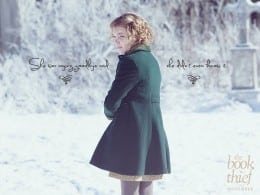 It was white . . . of the blinding kind . . . It felt as though the whole globe was dressed in snow . . . Trees wore blankets of ice . . . someone had died . . . there was one mother and her daughter. One corpse. (6-7)
It was white . . . of the blinding kind . . . It felt as though the whole globe was dressed in snow . . . Trees wore blankets of ice . . . someone had died . . . there was one mother and her daughter. One corpse. (6-7)
In her second experience, Death describes her loss by the blackness of the sky.
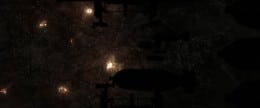 “a signature black…the darkest moment before dawn . . . the final moment of eclipse—the recognition of another soul gone.” (9-11)
“a signature black…the darkest moment before dawn . . . the final moment of eclipse—the recognition of another soul gone.” (9-11)
In the third encounter, Death describes the sky as red.
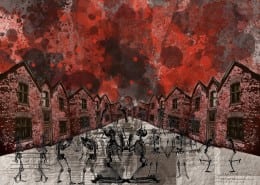 . . . like soup, boiling and stirring. In some places, it was burned. There were black crumbs, and pepper, streaked across the redness . . . the sky was a devastating, home-cooked red. The small German town had been flung apart one more time . . . a mountain range of rubble. Snowflakes of ash fell . . . (12-13)
. . . like soup, boiling and stirring. In some places, it was burned. There were black crumbs, and pepper, streaked across the redness . . . the sky was a devastating, home-cooked red. The small German town had been flung apart one more time . . . a mountain range of rubble. Snowflakes of ash fell . . . (12-13)
In each of the three glimpses Death gives us in the prologue, he leaves out who has died. Because we trust these deaths are meaningful to the story, we turn the page and immediately wonder who has died and how these deaths will affect the book thief.
 In chapter one, Zusak opens with the first death, that of the book thief’s younger brother, described by Death by the color white. Not only is white one of the colors of the Nazi Party Flag, it also symbolizes the book thief’s virginal experience with loss.
In chapter one, Zusak opens with the first death, that of the book thief’s younger brother, described by Death by the color white. Not only is white one of the colors of the Nazi Party Flag, it also symbolizes the book thief’s virginal experience with loss.
Her brother’s death and the consequences that follow set the book thief’s story in motion.
In the second encounter with Death, the blackness of the sky also reflects one of the colors of the Nazi Party Flag as Death comes for an English bomber pilot who has crashed his plane near the book thief’s village.
When the book thief’s best friend, Rudy, is first to find the plane, he places a teddy bear onto the dying, enemy pilot’s shoulder. Rudy’s act of kindness shows us the importance of forgiveness, something the book thief will need to embrace in order to survive the war and all of the deaths of those she loves because of it.
The third encounter with Death comes at the climactic moment of the novel just after a bomb hits her village and turns it into “a mountain range of rubble.” Although the book thief has survived, she has lost everyone she loves.
Death describes her loss through a red sky which is the dominant color of the Nazi Party Flag, and the color that represents the spilt blood around her and the emotional anguish the book thief feels.
Not until we see these three encounters played out in scene do we realize the brilliance of Zusak’s prologue. These three encounters come to correspond to the inciting incident, a possible resolution and the climax—all of which are important plot points that relate to the heart of the story and the book thief’s struggle.
http://www.youtube.com/watch?v=m7B8ioiZz7MBy revealing these three encounters in the colors of the Nazi Party Flag, Zusak enriches the story and sets a tone of foreboding that anchors us in the period in which this story takes place. His use of color adds another layer of emotional depth to the book thief’s state of mind as she struggles with being left behind.
 For more information about Markus Zusak, click here.
For more information about Markus Zusak, click here.
To read an interview on the eve of the movie launch from Markus Zusak, click here.
For an article on the making of the movie, click here.
Find Markus Zusak on Facebook.
Follow Markus Zusak on Twitter.

